Planting honeysuckle edible spring - when and how to plant seedlings correctly
Honeysuckle is a very unusual early flowering shrub plant that produces the earliest and most beneficial fruits. Naturally, in order to properly plant a bush in spring, you should adhere to some rules for the selection of a seedling (and necessarily several different varieties), the choice of a place for planting it, as well as for the preparation and filling of the planting pit.
Well, dear readers, below you will find step-by-step instructions on how to properly plant honeysuckle in spring!
Important! Next, we will talk about landing edible honeysuckle (blue), although decorative (honeysuckle or Tatar honeysuckle, which has red inedible berries) is planted in a similar way.
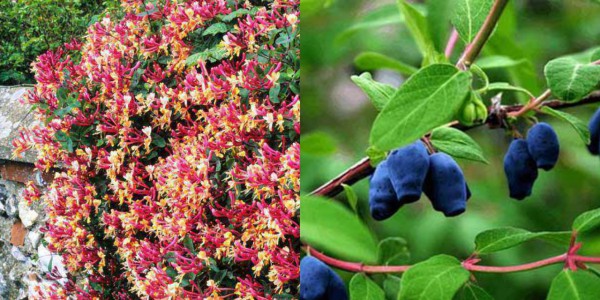
Content
When to plant honeysuckle in springcom month: optimal timing
Of course, one of the most important questions gardeners ask is when to plant honeysuckle in spring.
We answer: it is optimal to plant honeysuckle in early spring, immediately after the snow melts, i.e. you need to be in time before budding on the shoots of the shrub, in other words, before the honeysuckle enters the growing season (i.e. the plant must still sleep).
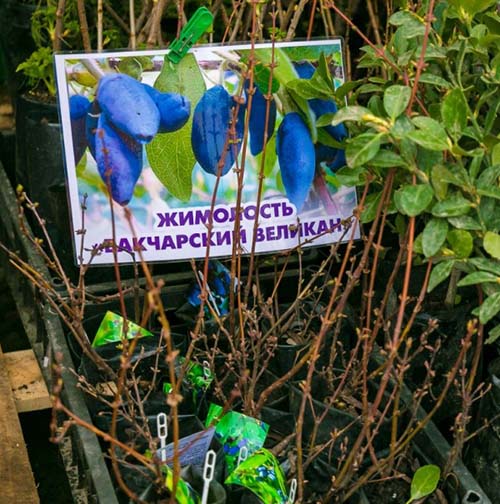
If you have a seedling with a closed root system (ZKS), i.e. you bought it in a container, and it is in this form that they are often sold, then it can be planted later. In general, seedlings with ZKS can be planted all year round.
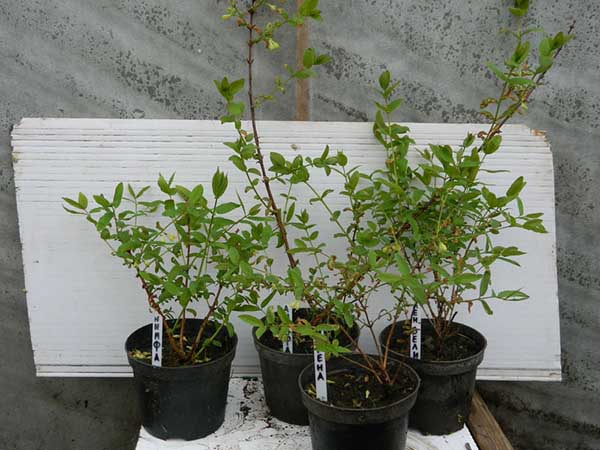
Summer residents and amateur gardeners live in different parts of our country, so each of them wants to know the approximate dates for planting honeysuckle in the spring in different regions of Russia.
- In the South - in late February and early April (Krasnodar and Volgograd are all southern cities, but their climate is completely different).
- In the Middle Strip (Moscow region) - in April.
- In Siberia and the Urals - in late April-early May, as well as in the North-West (in the Leningrad region).
When is it better to plant - in spring or autumn
Many gardeners who decide to grow a crop on their site are interested in when it is better to plant honeysuckle - in spring or autumn. The answer is very simple! You can plant a plant both in spring and in the fall.
However, still the best moment to plant honeysuckle is an autumn.
The fact is that as soon as the snow melts, the honeysuckle instantly wakes up and begins to bloom, in other words, it enters the growing season, and it is not recommended to plant seedlings in this state.
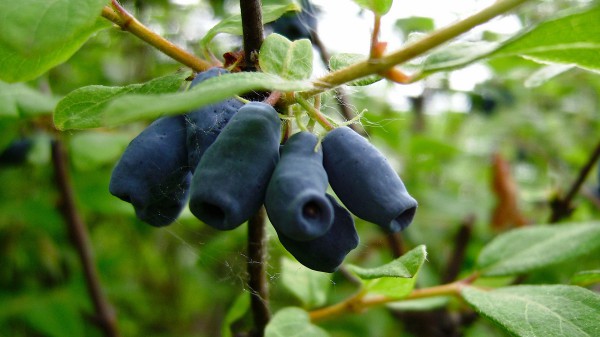
According to the lunar calendar in 2020
Choosing the optimal date for planting seedlings can help you moon calendar.
So, favorable days for spring planting of honeysuckle in 2020, according to the lunar calendar, are:
- in March - 26-29;
- in April - 11-15, 24, 25;
- in May - 2-10.
Of course, it is not always possible to get to the dacha on the appropriate days, so the main thing is not to land on dates that are unfavorable according to the lunar calendar (the days of the Full Moon and New Moon, as well as the period when the Moon is in Aquarius, since this is a barren and dry sign -italicized).
Unfavorable days, according to the lunar calendar, for 2020 for planting honeysuckle seedlings in spring, the following dates are:
- in March - 9,19-21, 24;
- in April - 8,15-17, 23;
- in May - 7,13-14, 22;
- in June - 5,9-11, 21.
According to the lunar calendar, from the magazine "1000 Tips for Summer Residents".
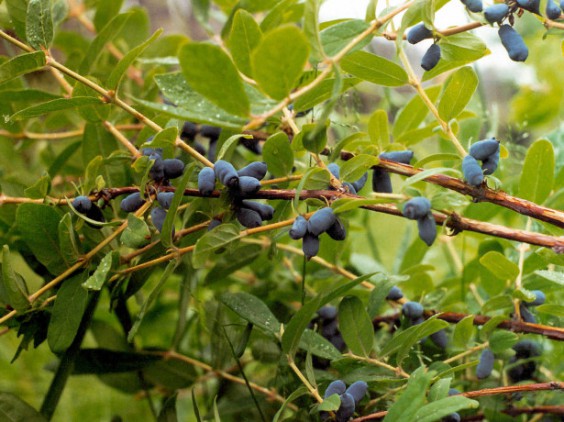
How to plant honeysuckle in spring - choose the right place and prepare the planting pit
In order to properly plant honeysuckle seedlings in spring, you must first buy several varieties of seedlings, choose the most suitable place in the garden for planting them and place them at the right distance, planting them in properly prepared planting holes.
What and how many seedlings to buy
Since honeysuckle begins to bear fruit already at the age of 3-4, it is logical to buy exactly 2-3-year-old seedlings, and not one, but necessarily several.
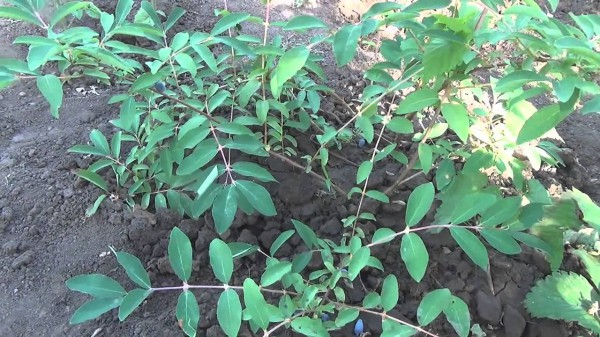
The fact is that honeysuckle is a self-fertile plant that requires cross-pollination, in other words, pollinated by the wind (more precisely, other pollinating varieties), therefore, if you want to get good yields (otherwise the berries simply will not set, although the flowering will be abundant), then you should plant several plants of different varieties not far from each other (at least 2, and even better 3-5 varieties).
Interesting! The same way maize is planted and grown.
Planting site and suitable soil
Some summer residents do not know where it is better to plant honeysuckle - in the shade or in the sun. Many quite rightly (especially residents of cool regions with a short warm period) believe that it is optimal for berry bushes to find the sunniest area, while closed from northern winds.
However! It is worth knowing that honeysuckle is originally a forest plant, which means it can feel comfortable in a slightly shaded place (with diffused sunlight), so to speak, under the canopy (crowns) of trees.
In the shade and partial shade, the berries will be small and small.
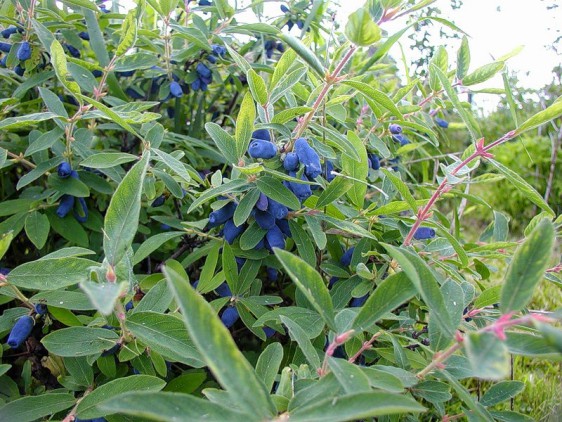
Also, do not plant honeysuckle in the lowlands, where it stagnates after the spring thaw of snow.
Advice! Most honeysuckle lovers unanimously argue that if the planting site is well chosen, then in the future you will not need to take any special care or fight pests and diseases.
The soil
It is believed that honeysuckle loves loose soil of a neutral reaction (pH 6-7, and according to some sources - from pH 5.5 to 7.5), i.e. the same sandy loam soil or light black soil.
Despite the fact that honeysuckle is a forest berry, it is by no means blueberries, which grow only in acidic soil (pH below 5.5, optimum 3.5-4.5).
If the soil is excessively clayey, then the water will stagnate, the root collar will rot and the seedling will simply disappear.
On the contrary, if the soil is too sandy, then the seedling can dry out from lack of moisture, which will evaporate very quickly after watering.
At what distance to plant bushes
As mentioned earlier, you need to plant several plants on the site at once, so it is very important to know at what distance they should be placed from each other. Typically honeysuckle bushes planted at a distance of 1.5-2 meters from each other, and between the rows - 2-3 m. Such a distance between the bushes is necessary due to the fact that growing, adult bushes fill a fairly large space.
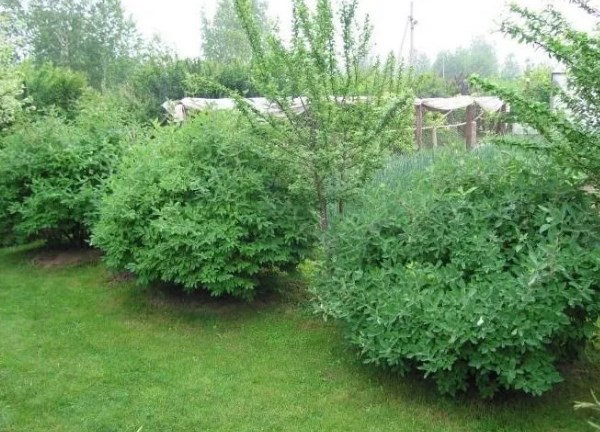
To what depth to plant (what should be the landing pit)
Landing pit for a honeysuckle seedling should be prepared taking into account the further development of its root system. As a rule, optimal sizes are 40-50 cm deep and the same 40-50 cm wide (in diameter).
Advice! If you are planting a seedling in a container, then make a hole just 2-3 times the size of the container.
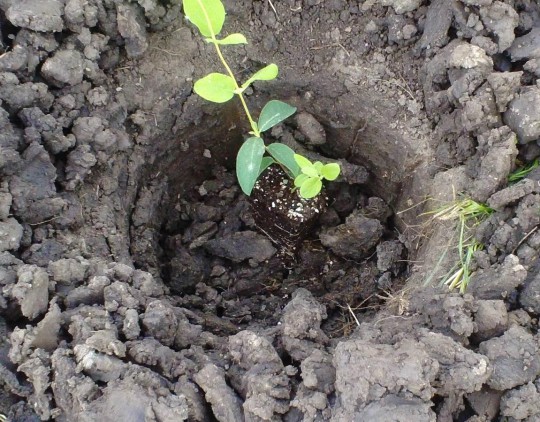
How and what to fill the planting hole
Next, the planting hole for planting honeysuckle should be filled with fertile soil, namely apply organic and mineral fertilizers:
Important! Mineral fertilizers must be thoroughly mixed with earth and humus without fail, and then the resulting mixture should be poured into the pit.
- the upper fertile layer of soil (which you have left after digging a hole);
- compost or humus (6-12 kg);
- forest (coniferous) litter (after all, this is still a forest plant);
It will be just fine if you also forest land add.
- superphosphate (80-100 grams) or 200-400 grams of bone meal;
- potassium sulfate (60-80 grams) or 200-400 grams wood ash.
Or, you can simply pour in about 80-100 grams of nitroammophoska (or diammophoska), of course, if you use mineral fertilizers.
Direct landing
Step-by-step instructions for spring planting of honeysuckle:
- Fill the planting hole halfway with the nutrient mixture.
- Make a small mound in the center of the landing hole.
If you are planting a seedling with a closed root system (in a container), then you do not need to make any mounds, but simply plant it in a prepared planting hole without disturbing the earthen coma.
- Cut too long roots of the seedling up to 30 cm, and then dip in a clay mash (creamy state).
- Place the seedling in the center of the mound and spread the roots down on the sides (the roots should in no case bend and stick up!).
- Cover with earth (top fertile soil layer + forest litter), while lifting the seedling so that the earth wakes up between the roots without leaving empty cavities.
- Compact the soil.
Note! The root collar of the seedling should be buried 5-8 cm into the soil. However, given that the earth is likely to settle, it is better to initially deepen it by 2-5 cm.
However! If your soil is heavy, then it is better to plant at ground level, or deepen it no more than 3 cm.
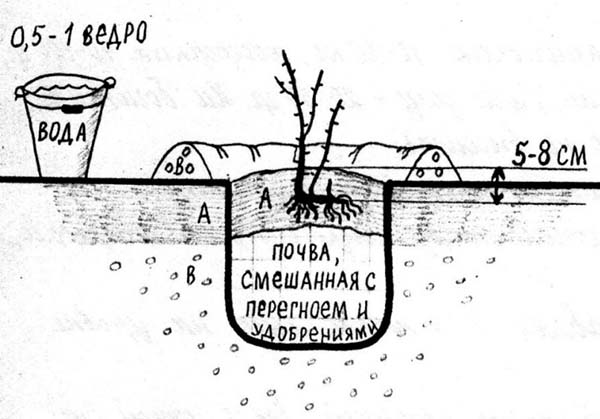
- Next, you need to make a hole for watering. And then pour it abundantly, pouring out about 1-2 buckets of water (pour it out gradually - wait for it to be absorbed and add more).
- Level the irrigation holes, loosen the soil in the near-stem circle and mulch it with peat, humus or compost (just a couple of centimeters).
Mulch will help to avoid drying out of the roots and excessive evaporation of moisture.
- Cut off, or rather, shorten all shoots by 1 / 3-1 / 4.
Video: how to plant honeysuckle correctly
Caring for honeysuckle after planting
Honeysuckle needs proper care:
- Honeysuckle - moisture-loving plant, so it will be just fine if you immediately grind and keep it moist regularly watering (even more so if planted in a sunny place). But timely watering at the beginning of the growing season is especially important.
If you plant honeysuckle in the shade of trees, there is almost always enough moisture.
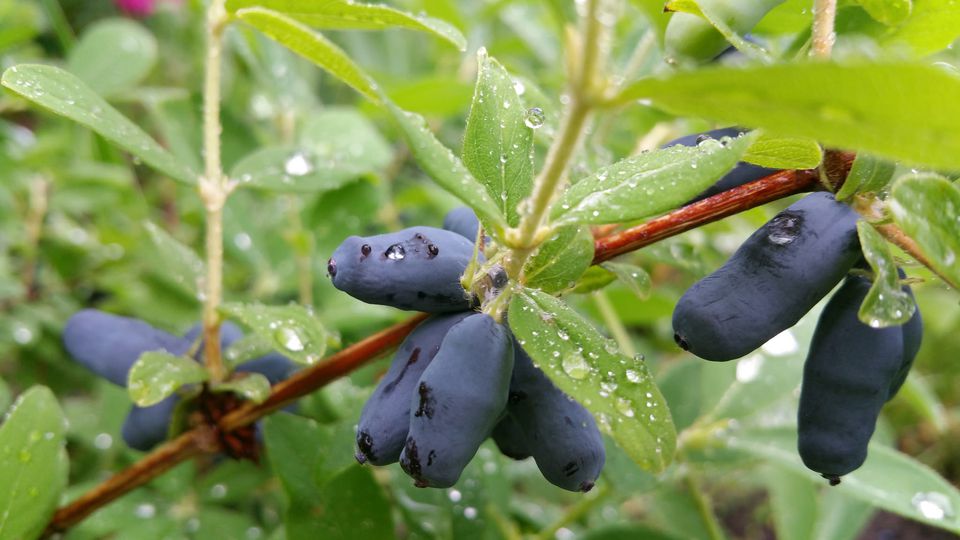
Do not forget about timely loosening of the soil (to a depth of 5-8 cm) and weeding.
- Shrub is very fond of feeding organic matter, and you can give them by simply pouring them under the bush (for example, as mulch) once every 1-2 years. At the same time, it is believed that the most suitable organic fertilizers for honeysuckle are rotted horse manure (humus) and wood ash.
The scheme for feeding honeysuckle with mineral fertilizers is as follows (performed every 2-3 years):
- after fruiting (in autumn) - phosphoric and potash fertilizers (superphosphate and potassium sulfate or special "Autumn");
- early spring (before flowering) - nitrogen fertilizers (ammonium nitrate, urea);
- after flowering - nitrogen-phosphorus-potash, i.e. complex fertilizers (for example, nitroammofosk).
- In the future, you will definitely need to carry out a thinning, so to speak, brightening pruning honeysuckle (and of course, do not forget about sanitary, although they can be combined). If at first the shrub grows relatively slowly (the root system develops), then after 4-6 years, rapid growth and active shoot formation begin, in other words, without pruning, the bush will simply overgrow and begin to shade itself.
Moreover, pruning is best done immediately after fruiting, while the leaves have not yet fallen, so that it is better to see which shoots are too weak and which are already dry (sanitary pruning).
By the way! The site has an article about how to properly care for honeysuckle in autumn (including properly pruning).
- If in the future you want to propagate your berry bush, then keep in mind that it is excellent cuttings and propagates by digging cuttings.
Advice! About, how can honeysuckle be propagated in different ways in spring, summer and autumn, read in this detailed material.
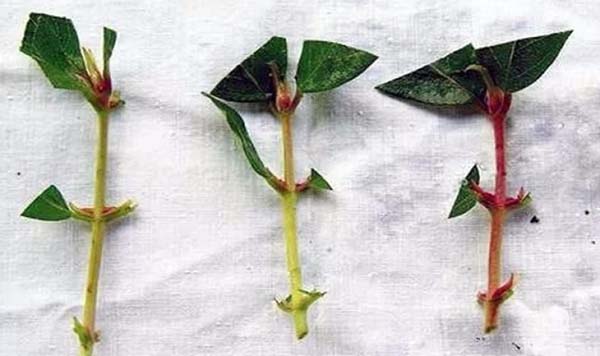
Interesting! There is a quite reasonable opinion that since honeysuckle is a forest shrub, it needs minimal care, in other words, the main thing is to place it correctly on the site (choose a suitable place and plant several bushes at the right distance).
Video: planting and caring for edible honeysuckle
Interesting features of honeysuckle
- Honeysuckle has a very specific tart taste, which is somewhat similar to forest blueberries.
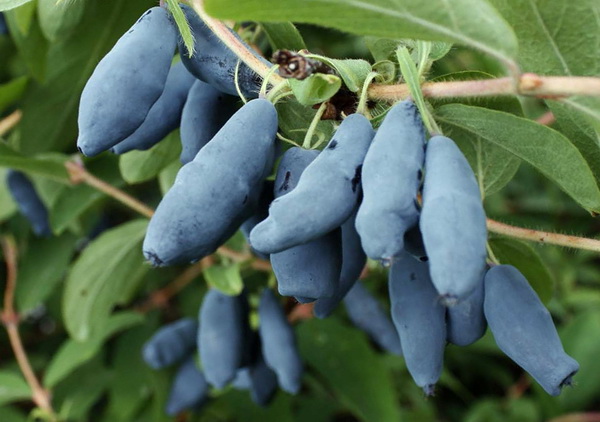
- Ripens earlier than all berry bushes and fruit trees in the garden, including even earlier than strawberries (about 10-14 days).
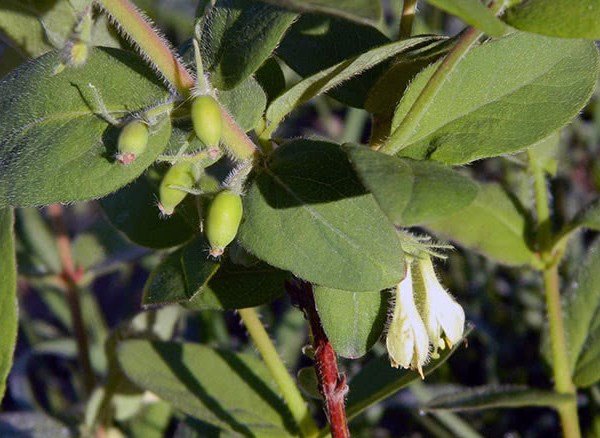
As a rule (in most varieties), the ripening of the fruits does not occur simultaneously, but gradually - the edible shrub may still continue to bloom, although at the same time some berries may already completely set in it. Accordingly, you can enjoy delicious berries for 1-1.5 months.
- You need to harvest on time = regularly, because if you hesitate, ripe berries will simply end up on the ground.
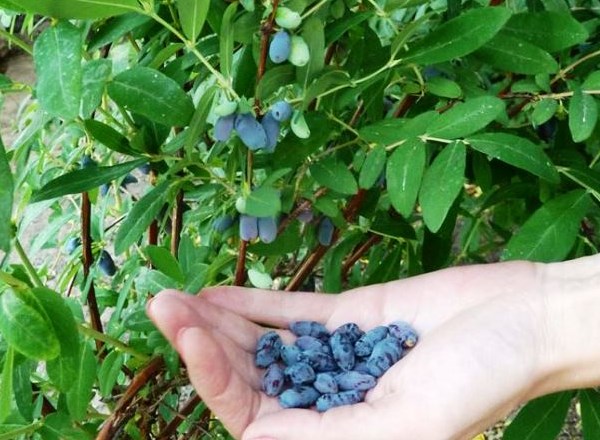
You see that the berries are ripe - collect, otherwise, you will have to eat from the floor 🙂
Note! Of course, there are certain varieties that are capable of not dropping berries, so carefully read the description of the purchased variety.
- Honeysuckle is characterized by increased winter hardiness, it can withstand frosts down to -45 degrees, and flower buds - up to -8 degrees, so in the spring it is not afraid of any return frosts.
That is why honeysuckle can be grown in almost all regions, which means that it is ideal for the Middle Belt (Moscow Region), as well as the North-West (Leningrad Region).
- The shrub is maximally resistant to most diseases and pests, except that birds are very fond of it ...
- If the leaves of honeysuckle almost immediately fall off after fruiting (at the same time they turn black sharply, as if they are sick with something), then this is an absolute norm.
Worth knowing! All plants that bear fruit early do this.
- If you find that the bark of honeysuckle is peeling off, then you do not need to panic, this is only a biological feature of this crop.
Thus, planting honeysuckle in spring is not such a difficult procedure, the main thing is to buy several different varieties and choose a suitable place in the garden. Further care is more than standard, moreover, this is a forest plant, therefore, quite unpretentious.
Video: step by step instructions for planting honeysuckle


Everything is written intelligibly and clearly